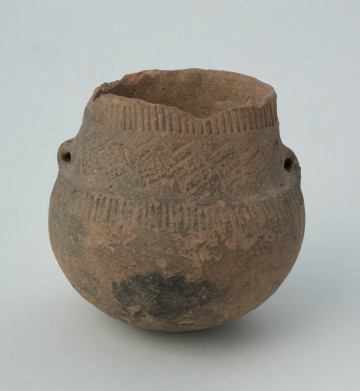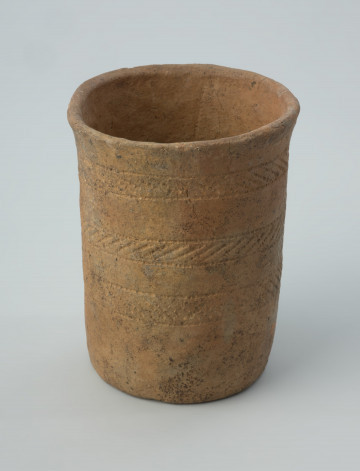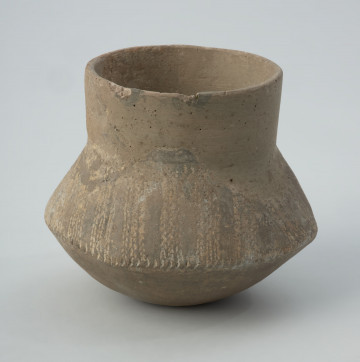
Decorated amphora
3100 p.n.e. — 2600 p.n.e.
National Museum in Szczecin
Part of the collection: Stone Age
The decorated clay amphora comes from a megalithic tomb discovered in the spring of 1882, which was found during the fieldworks on a hillock in the vicinity of the Liskowo farmstead (Grünhof), which was part of the Rabin estate (Gross Rambin) owned by Ludwig Robert Tiede. Under the supervision of the estate owner, a stone construction of a burial chamber was opened. Inside it five human skeletons were found as well as grave goods in the form of five earthenware vessels, a flint chisel, two amber ornaments and a boar skull with several neck vertebrae. Tiede, who collected antiquities discovered in the Rabin area, placed the skeletons and burial furnishings in his collection stored in the Rabin manor house. After his death, his wife decided to bury the skeletons excavated from the tomb, and in 1891-1892 the family deposited the antiquities in the museum collection gathered in Szczecin. The construction, method of burying the dead, a set of accompanying gifts, and the presence of animal remains, make it possible to connect the Rabin tomb with the people of the Globular Amphora culture, and its use can be dated between the end of the 4th and the first half of the 3rd millennium BC. The range of occurrence of Globular Amphora culture inventories extends from north-western Germany to western Ukraine. In this area three regional groupings can be distinguished. The western and partly central Pomeranian lands constitute a border zone between the western and central territories (the so-called Polish group). It is reflected in the decoration of clay vessels from the tomb in Rabin. They represent the form of a two-dry amphora with a cylindrical neck and a spherical body, which is characteristic of the globular amphora culture, but their ornamentation combines features specific to the indicated regional groups.
Krzysztof Kowalski
Author / creator
Dimensions
cały obiekt: height: 13.3 cm, diameter: 12.5 cm
Object type
ceramic, vessel (container)
Technique
firing, modelling, hand made, manual modelling
Material
clay
Origin / acquisition method
acquisition
Creation time / dating
Creation / finding place
Owner
National Museum in Szczecin
Identification number
Location / status

3100 p.n.e. — 2600 p.n.e.
National Museum in Szczecin

National Museum in Szczecin

National Museum in Szczecin
DISCOVER this TOPIC
National Museum in Szczecin
DISCOVER this PATH
Educational path